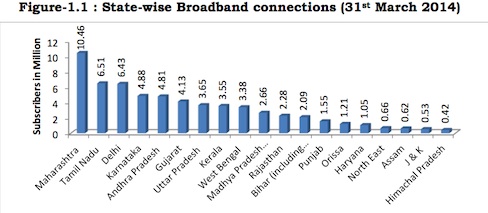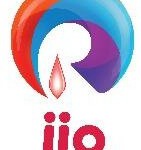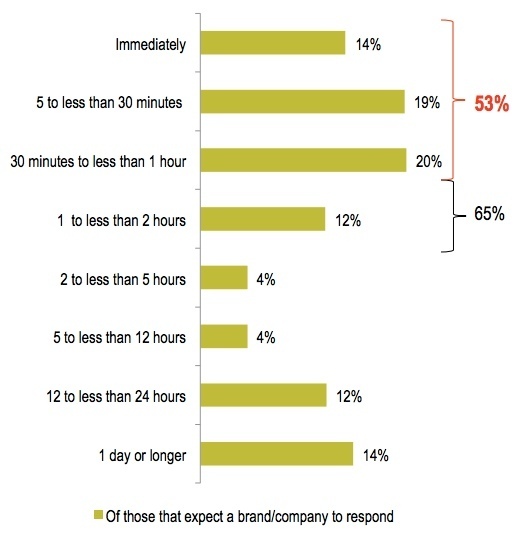Well, it’s about time: The Telecom Regulatory Authority of India (TRAI) has released a consultation paper to discuss the reasons for the poor broadband penetration in India as well as seek comments on the steps required to increase the penetration and use of broadband in the country.
You can download the consultation paper here and submit your views by October 14, 2014 and counter comments by October 21, 2014 to nsl.trai@gmail.com.
Remember that India currently has only 15.04 million broadband customers as per the latest TRAI numbers (pdf), which hasn’t really progressed over the past few years unlike the mobile connection base which has witnessed a massive growth in the same period. It also reportedly has the slowest average Internet speed among countries in the Asia Pacific region and one of the slowest broadband adoption rate globally.
However, increasing the broadband penetration in India has been one of the prominent objectives of the new BJP government ever it came into power earlier this year. This was also part of its election manifesto, indicating that there is some possible signs of improvement in the future.
During the Union Budget in July this year, the Indian government had also proposed a pan-India programme called ‘Digital India’, whose one of the objectives was to ensure Broadband connectivity at village level. This program was expected to provide broadband to 2.5 lakh villages, 400,000 public internet access points, Wi-Fi in 2.5 lakh schools and universities along with public wi-fi hotspots for citizens among other things. This program received the cabinet approval last month.
There were also reports of Department of Telecom (DoT) planning to to make Broadband Internet a basic right as part of the new National Broadband Policy in the same month.
Issued raised in the consultation paper:
Private sector participation in NOFN: TRAI has questioned whether PSUs like BSNL, RailTel and PowerGrid were ideal choices to implement the ambitious National Optical Fibre Network (NOFN) project that is already lagging behind schedule. It notes that decision-making processes in PSUs are usually cumbersome and time- consuming which further delays the project execution.
Earlier in June this year, Universal Services Obligation Fund (USOF) that funds the National Optic Fibre Network (NOFN) project, had informed telecom minister Ravi Shankar Prasad that they will only be able to cover 50,000 villages by 2014-15, as opposed to the initial target of 100,000 villages.
TRAI now suggests that the government should now consider awarding EPC (Engineering, Procurement and Construction) turnkey contracts by BBNL to private sector parties through International Competitive Bidding (ICB)
In a bid to reduce the infrastructure development costs in reaching remote rural locations, the regulator has also suggested piggybacking on the existing private sector access networks and has sought measures from the private sector to reduce the delivery costs.
– Right Of Way: TRAI notes that Right of Way (RoW) has been a major constraint in the proliferation of OFC network in the country. This is due to lack of uniform guidelines from the central government, which has led to different State Governments adopting different rules, criteria, costs and time periods to provide the requisite clearances.
Besides seeking views on the major issues faced in obtaining Right of Way (RoW) for laying optical fibre suggested, TRAI has suggested formulating a clear policy framework and licensing conditions that helps in sharing last mile infrastructure among telcos. It also suggests that the “Right of Way” rates could be lowered to incentivize infrastructure sharing.
In addition, it suggests formulating guidelines to mandate compulsory deployment of duct space for fibre cables and space for telecommunication towers in all major physical infrastructure construction projects such as building or upgrading highways, inner-city metros, railways or sewer networks.
– Marketshare of various operators: TRAI mentions that there are 60.87 million Internet connections from 121 operators as of March 2014. However, the top five service providers service providers hold 83% market share and the top 10 service providers account for 97% market share. State owned BSNL and MTNL together have about 74.9% marketshare for wireline broadband.
This indicates that the market is still dominated by a few players only and a majority of service providers are either unwilling or unable to penetrate into the market despite having a license to provide broadband services. (Also read: More than 500 standalone ISPs have urrendered licenses to the Indian Government)
Uneven Broadband rollout: TRAI also notes that top five states account for a total of 54.4% marketshare and the Metro & category A circles combined account for 61% of overall connections. This suggests that the broadband rollout has been uneven and many states still have little to no broadband connectivity.

TRAI has therefore asked for immediate measures that are required to promote wireline technologies like DSL, Cable TV and Optical Fibre in the last mile (local access networks). It also sought information on the cost per line for these wireline technologies and how can this cost be minimised.
It has also sought for limitations in deploying wireless technologies like WiFi, WiMAX and how can these be made faster.
Connecting to NIXI: TRAI notes that only 39 of the 141 operational ISPs are connected to the National Internet Exchange of India (NIXI) and there has been resistance from other service providers to join NIXI, due to which it has not been able to be an effective Internet exchange point (IXP).
IXPs essentially enable ISPs to peer among themselves, so as to route the domestic traffic within the country for better quality of service, reduced latency and reduced bandwidth charges.
The regulator has therefore asked for specific reasons as to why ISPs are not proactively connecting to NIXI and what measures has to be taken so that all ISPs are connected to NIXI. Interestingly, it’s worth noting that there were earlier reports of DoT planning to make it mandatory for ISPs to connect to NIXI, way back in 2012.
It has also sought measures to encourage content service providers to host content in data centres situated within the country, in order to reduce the cost of interconnectivity to various parts of the world.
Promoting Broadband services through Cable TV networks: TRAI has asked for suggestions including policy changes to promote broadband through the cable networks.
It notes that Cable networks can potentially play a significant role in increasing the broadband penetration in the country since it can apparently cater to a much larger rural population as compared to DSL connections.
Multi System Operators (MSOs) have also apparently laid around 30,000 km of OFC (Optic Fibre Cable) to provide connectivity to cable operators besides having a large backbone OFC network for inter-city and intra-city connectivity. Although, they will have to significantly upgrade their network to provide this service since the network is usually shared among several nearby users.
TRAI mentions that Cable TV operators have however been reluctant to become broadband suppliers since it believes that the rate of returns on broadband services may not be sufficient to justify the additional capex and opex.
Also, if cable operators have to bundle different services, they have no option besides acquiring an Unified License (UL), which comes with financial barriers.
These players are also not able to receive funding from banks and other institutions for upgrading their network since they have not been included in the infrastructure category.
Deployment of FTTH: TRAI has sought measures required to create a proper ecosystem to deploy FTTH (Fibre to the Home) in the last mile. It notes that while OFC is probably more suited to support futuristic broadband needs, they are quite expensive.
Wi-Fi hotspots: TRAI suggests that there should be more unlicensed spectrum in the 2.4 GHz range to enable the expansion of wireless communication networks. It mentions that the 1880-1890 MHz band can be unlicensed in line with other international countries like the United States and Europe.
It also suggests that unlicensed bands has to be allocated in bigger chunks in various slots in these bands and operators should be allowed to pilot new technologies and apps in these bands on licence- exempt basis.
In addition, it seeks feedback on which other spectrum bands can be unlicensed to provide broadband services through Wi-Fi or any other technology. It has also sought information on the type of business model required to create more Wi-Fi hotspots. Note that Aircel CMO Anupam Vasudev had earlier said in a panel discussion that people are typically unwilling to pay for a public WiFi service since they want the service to be free, due to which public WiFi services don’t typically work out.
While TRAI has questioned as to why Wi-Fi hotspots installation has not picked up in the country, it’s worth noting that several Wi-Fi announcements have been made by the Indian government or various state governments, but there has been little in terms of delivery. Do read a list of WiFi announcements from Indian governments (state/central) and departments here.
Various telcos like Vodafone, Reliance Jio, Tata Teleservices have launched or piloting Wi-Fi hotspots in India.
Releasing more spectrum and auctioning 700 MHz band spectrum: TRAI mentions that there is urgent need for the Indian government to release more spectrum as soon as possible, to enable the successful rollout of wireless broadband and has sought feedback on how much spectrum might be required in the immediate future and in the long term to meet the broadband penetration target.
It also has sought comments on a relevant time frame for the government to auction spectrum in the 700 MHz band. Note that 700 MHz band is considered more efficient than other bands since it offers better coverage and faster data speeds.
It also seeks views on whether there are any other spectrum bands that can be used to provide wireless broadband services.
Also read:
– India reclassifies Broadband as 512kbps, 6 yrs after Dayanidhi Maran wanted 2Mbps
– National Optic Fibre Network’s broadband coverage target for FY15 halved
– DoT wants to make Broadband Internet a basic right in new National Broadband Policy
– ACT Broadband rebranded as ACT Fibernet; To invest Rs 500 Crore to double its base
Download: Structuring Of Investments In eCommerce Businesses In India – A MediaNama and Arkay & Arkay
























No Comments